- Books Name
- CBSE Class 6 Science Book
- Publication
- Param Publication
- Course
- CBSE Class 6
- Subject
- Science
Types of substances
(a) Magnetic Substances : Those substances that are attracted by magnets are called magnetic substances.
Example : Iron, cobalt, nickel, steel etc.
(b) Non-Magnetic Substances : Those substances that are not attracted by magnets are called non-magnetic substances.
Example : Plastic, rubber, glass etc.
Making a Magnet
The methods by which an ordinary piece of any mangetic material, like iron or steel, can be made a magnet are single touch method, double touch method and electrical method. Let us study each method separately.
(a) Single touch method : A piece of any magnetic material, like iron or steel (a nail, knitting needle, bolt, etc.), is taken and placed on a bench or a tale. A bar magnet is brought close to the magnetic material (say an iron piece AB). One end of the bar magnet is stroked against it, moving from end A to end B of the iron piece.
When the bar magnet reaches end B, it is lifted and the stroke repeated from end A to end B, it is lifted and the stroke repeated from end A to B.This procedure is repeated several times, keeping two things in mind.
(i) The same pole of the bar magnet should be used every time
(ii) Strokes should be in the same direction.
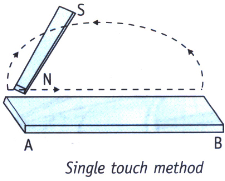
By Stroking the iron piece with the north pole of the bar magnet, end A becomes the north pole and end B the south pole.
(b) Double Touch Method : The iron piece to be mangetized, say AB, is placed on a bench and two bar magnets of equal strengths are taken. Here, the opposite poles of both the magnets are stroked, at the same time, from the centre to the opposite ends of the iron piece being magnetized. This step is repeated may times.
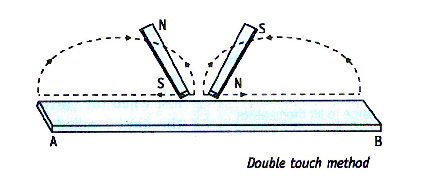
Then,the end A of the iron piece becomes the north pole and end B becomes the south pole.
(c) Electrical Method : Hans Christian Oersted, a Danish scientist, discovered in 1819 that a wire carrying electric current behaves like a magnet. This discovery provided the best method to make mangets by using an electric current.
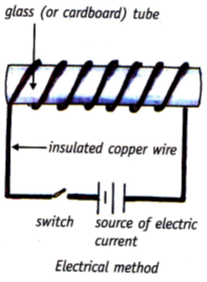
A long, insulated copper wire is taken. About 300 or more turns of the wire are wound around a glass or cardboard tube. The turns of the wire are kept as close together as possible. The ends of the wire are connected to a source of electric current and a switch. A knitting needle is put inside the tube and the current switched on for a short period of time. When the needle is removed from the tube, it behaves like a magnet.
- Books Name
- Class 6 Science Book
- Publication
- PathSet Publications
- Course
- CBSE Class 6
- Subject
- Science
Introduction
Discovery Of Magnets
According to a legend, the first magnet was discovered by a Greek shepherd named Magnes. It is said that the nails in his shoes and the iron tip of his staff got stuck to a large black rock on which he was standing. Greeks named this strange type of rock ‘magnetite’. The Chinese also knew about magnets. Ancient Chinese sailors used magnets for navigation.
Magnets
Magnets are made of materials that attract objects made of certain substances like iron, cobalt, and nickel.
Magnets come in various shapes and sizes (Fig. 12.1). They can be found as horseshoe, ring, cylindrical, or bar shape.
Not all objects are attracted to magnets. Objects that are attracted by a magnet are said to be magnetic, e.g., iron and nickel. Objects that are not attracted by a magnet, are said to be non-magnetic, e.g., wood and plastic.
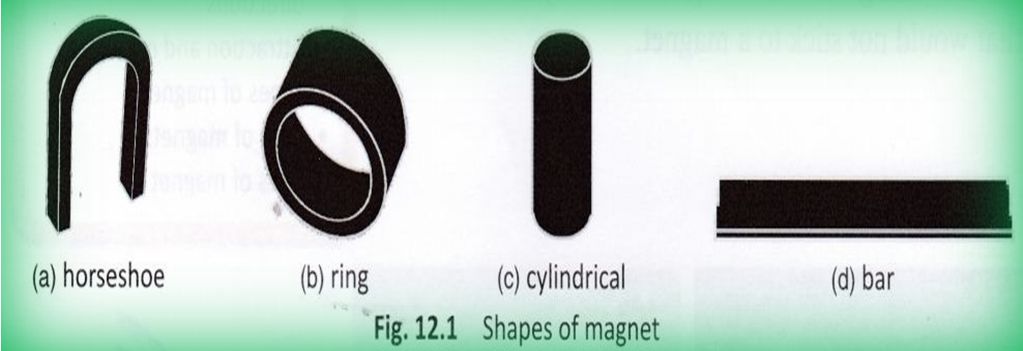
What are Magnets?
Magnets are pieces of iron or other materials which exhibit the properties of magnetism i.e. the ability to attract other objects that contain iron. Compass needles, fridge magnets and MRI scanners are some common examples of magnets.
It is said that magnets were discovered after a shepherd named Magnes accidentally got his iron stick stuck to a rock. It was later discovered that the said rock had magnetic properties and was called Magnetite, named so after the shepherd.
These days magnets come in different shapes and forms such as: horseshoe magnet, bar magnet, cylindrical or a ball-ended magnet, needle magnet etc.
Natural Magnet: Magnetite is called natural magnet.
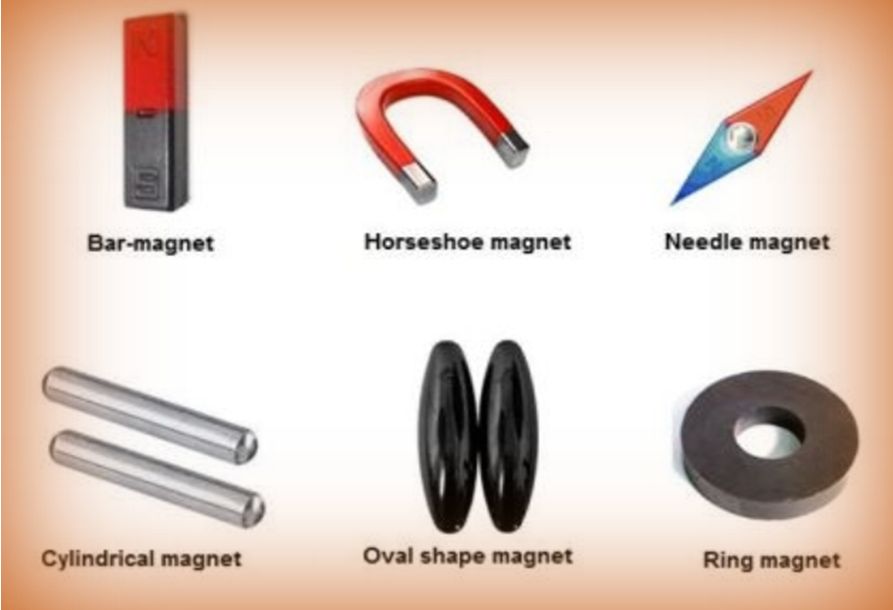
Magnetic and Non-Magnetic Materials
Magnetic Materials: Materials like nickel, cobalt and iron are called magnetic materials. These materials are attracted to magnets.
Non-Magnetic Materials: Materials like rubber, plastic, cloth, glasses etc. which are not attracted to magnets are referred to as non-magnetic materials.
Types Of Magnets
There are two types of magnets: temporary and permanent. Magnets that retain their magnetic properties only for a short period of time are called temporary magnets. Magnets that retain their magnetic properties for a long period of time are called permanent magnets.
Temporary magnets are usually made of iron, cobalt, or nickel. These materials behave like magnets only when they are near a strong magnet. They quickly lose their magnetic property if the influence of the strong magnet is removed.
Permanent magnets are made from mixtures of iron, cobalt, or nickel with other materials. These make strong magnets and retain their magnetic properties for a long time.
Uses Of Magnets
Magnets have several uses:
- Credit cards, ATM cards, and identity cards have a strip of magnetic material that stores information.
- Television and computer monitors use magnets.
- Computer hard discs and audio and video cassettes have magnetic material that store information.
- Magnets are used in picking up substances made of iron from scrapyard.
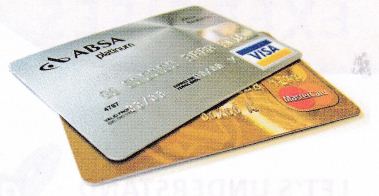

 Param Publication
Param Publication
 PathSet Publications
PathSet Publications
